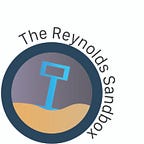An Implant Specialist With An Arts and Crafts Background Who Helped to Make Emergency PPE Equipment
Reporter Seanna Simpson interviews Kari Harn, an implant specialist at Renown Hospital, to find out what it’s been like to work in a hospital during COVID-19 and how she used her creativity to help her colleagues in the initial weeks.
Kari Harn is an implant specialist at the Mills St. location of Renown Hospital and has been in the medical field for roughly eighteen years. When Covid-19 hit, the hospital had a shortage of personal protective equipment (PPE), which includes facemasks, face shields, and hospital gowns. Luckily, Harn had a background in arts and crafts so she stepped up to help.
Q: When you first heard of the pandemic starting in America, how did you think it would affect your job?
A: I thought we were going to be more clinical which just means being more hands on with patients instead of working behind the scenes. I am in a non-clinical position now but I have the background to be clinical, so I thought we were going to be pulled to help with bedside needs because surgery was instantly stopped.
Q: How did your job continuously adapt to the ever changing information about Covid-19?
A: We just did a lot of our own research of what we needed to do. We talked a lot with the department I work closely with which is the sterile processing department who sterilize all of our instruments and equipment for surgical procedures. We were also running into a short supply of personal protective equipment which includes masks, face shields, and gowns. So we were trying to do the research to create and make those ourselves using the material we use to wrap sterile trays and ended up creating a group of people with some sewing machines to sew and create our own PPE equipment.
Q: Why were you the one they approached to make PPE equipment?
A: The higher ups in the hospital were trying to work out a solution to this critical need that we had. So they approached my manager to talk about different things and different items that we could make and use as protective equipment. My manager then gave me and my coworker the task of coming up with a pattern and figuring out how we could make a facemask. We played around with some ideas and made some masks to present to her and she came back the next day and told us that we are going to start making them so get ready! I was then put in charge, we were given a room to work out of, and we had four sewing machines set up and ready to go.
Q: How did you recruit people to join this group you were in charge of?
A: A lot of the group was made out of the OR (operating room) crew because surgery was down, so we repurposed a lot of that staff as well as the sterile processing staff. We all just came together and did what had to be done.
Q: What was it like being in the OR to being a part of this “facemask making group,” did you enjoy it?
A: I did enjoy it! I’m a very crafty person to begin with so it was very exciting to be a part of the solution doing something I already have an interest in. There was a need that we could do something directly to fix. It helped a lot of health care workers have what they needed to help patients. So it was very rewarding and exciting to be a part of that.
Q: Did you have to do any research to ensure that the masks could be used in the medical field?
A: Yeah so my manager did a lot of that research for me. The fabric wraps that we use to sterilize our instrumentation actually have fibers that work as better filters than a N95 mask. The only thing that prevented us from using them as replacements for N95 masks is we couldn’t get them to seal to the face. So we just used them as regular facemasks. The facemasks we made are impervious which means no fluids can go through them and they filter everything. We had to look into our sterilization parameters to see how the material actually works in order to be able to use it but after we made these masks we had to put them through our sterilization cycle to activate the fabric for it to work. So there was a lot of research that went into it.
Q: How does your hospital operate now?
A: We’ve hit a pretty standard practice now because things have settled down a little bit. We have put into place certain things to streamline caring for patients with Covid. We have ORs that are designated to only Covid patients so if a Covid positive patient needs surgery they go into a designated OR. They completely clean everything more so than what they would typically do. For example, anesthesia machines have to go through extra filtered cleanings just to get all potential risk out of those machines.
Q: What do you see Covid being like a year from now?
A: I don’t know, I think certain things are kind of our new normal and we have adjusted. I think our flu season might make it peak a bit because of having to differentiate a patient with the flu from one with Covid and we’ll have to rely on testing for that.
Q: Do you plan on staying in the medical field or has this pandemic at all discouraged you?
A: I will be in the medical field until I retire. I have always enjoyed helping people so I will always want to be a part of the solution even when it comes to this pandemic. If anything, it has encouraged me to stay even more.
